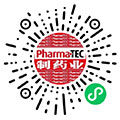制药用水系统消毒的最佳温度是多少?
撰稿人 | 漫漫制药路
责任编辑 | 胡静
审核人 | 何发
邵丽竹
何发
热点文章
-
洁净室:定义、规格与洁净度等级
2025-07-30
-
2025版中国药典发布!五大变化解读
2025-07-31
-
"AI制药第一股"的晶泰控股,收购这一“中国最大”
2025-05-23
-
2024年生物制药行业收入Top20
2025-05-22
-
《财富》世界500强出炉,18家药企上榜
2025-08-01
-
洁净室大型排风设备房间压力控制方案设计及应用研究——以药厂项目为例
2025-05-27
-
药品生产质量管理中变更控制的研究与分析
2025-05-30
-
基于CFD仿真技术的灌装机充氮装置设计优化
本文以某制药产线的灌装机设备为研究对象,采用计算流体动力学(CFD)仿真技术对充氮装置的充氮性能进行分析,并结合分析结果对氮幕结构进行了优化设计。随后,针对优化方案进行性能仿真验证,结果显示优化后的顶空残氧量降低至0.252%。为了进一步验证优化方案的实际效果,将优化方案应用于实际产线进行性能测试,测得的顶空残氧量为0.68%,这一结果满足了小于1%的要求,表明其充氮保护性能已达到国际先进水平。
作者:王志刚、刘依宽、刘佳鑫
-
药品密封性检测 :用户需求与优化
-
可控冻融系统在生物原液上的应用
-
人用疫苗生产数字化转型
-
药包材生产质量管理的进阶策略
-
药厂洁净区域风量和压差的控制策略














评论 0
没有更多评论了